|
|
|
| |
| -- 13th to 19th of August 2018 -- |
| |
| |
We leave the kingdom of granite and
the archipelagos, for the big islands of Southern Baltic, which mark
the transition to the endless sandy beaches of Poland and the Baltic
States. Surprise, at the frontier we discover yet another world of
weird limestone shapes incrusted with fossils.
More pictures of countryside medieval churches and seaside phantasmagoric statues in our page "Pictures".
|
| |

130 nautical miles (but 168 km on a bike!)
2729 miles sailed since the start
|
| |
|
| |
| | |
| 13th August : Stora Rammklöv – Visby (77NM) |
| |
The
problem with perfectly sheltered anchorages is that it is difficult to
feel when the wind decreases after the storm. According to the forecast
it should be around midnight. Once again we have to leave with the last
of the strong wind, if we want to get some breeze at all before it dies
out completely.
A few hours ahead, before darkness is
here, we remove most of the lines so as to limit the need to climb on
slippery rock at night (remember the water is only 14 ° C today...).
Then at midnight we set off, towards the South, following the last of
the dark stormy clouds still visible in the distance and under a shower
of falling stars ... |
| |
It is a very
pleasant night, wind force 5 from the back, sliding on the waves,
pushed along by a little current too. It reminds us how comfortable
downwind sailing can be. It’s been almost a month of only upwind
sailing since Hankö…
The wind doesn’t last unfortunately – but
thanks to our asymmetrical spinnaker we manage to keep on sailing all
morning. Always nice to be sailing with the spi out, while most other
boats around are motoring! The weather is nice too – this is a fine
sailing morning.
|

Advantage of dark nights, we can enjoy the sun rise again!
|
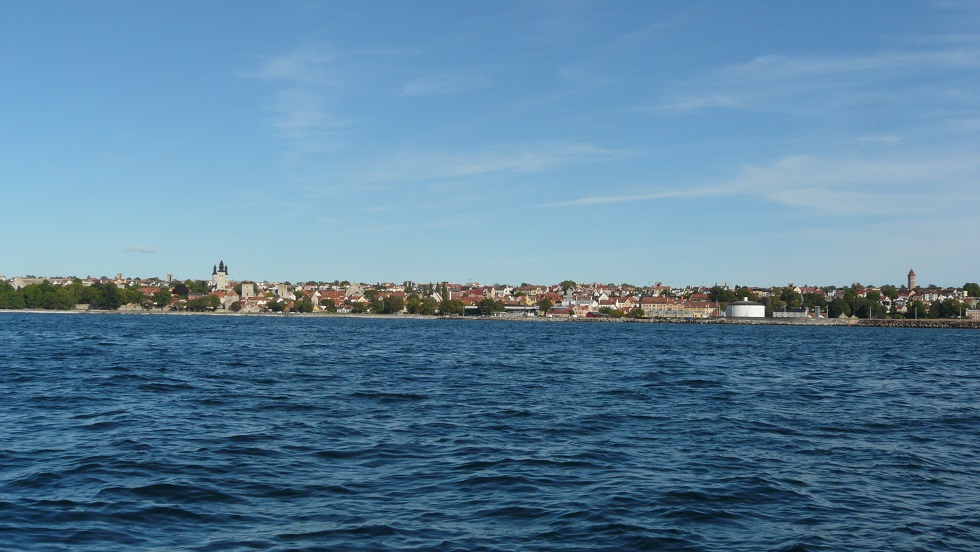
The city of Visby from the sea
| At the end the winds veers too much and we cannot keep the spinnaker up.
The
last hours are a painfully slow upwind tack… until we give up too
and turn on the engine for the last couple of miles. Not very
elegant :oS Gotland and its capital Visby are growing
on the horizon, we see the spires of the churches that we will visit
the next days, and the ferries that we will have to avoid to enter the
port. |
| Past
mid-August, we are off-season again! In the Nordics holidays are in
July – and it makes sense, with the weather markedly better then... The
good thing in August are the harbours three quarters empty. We can take
our time and choose our favorite spot: facing the wind, with a stern
buoy and moored at the pontoon. The fees are the same all summer
though, 250 SEK per night for us, without electricity nor shower (10
SEK for 5 minutes, using an access card). | 
13th of August in Gotland, grey sky, empty harbour, it's the endof the summer...
|
We
left three months ago exactly. Here we are in Gotland, the so-called
“Pearl of the Baltic”, one of the big milestones of this trip! |
13th to 17th August : visiting Gotland |
|
| |
| Gotland
is a huge island (170km long and 55km wide) which offers to sailors
with ample time and good weather conditions a playground of the most
interesting. But we have neither: the return date is fast approaching
and the summer is officially over. Our favorite high pressure zone,
which kept us warm for 3 months, gave way to a suit of low pressures…
So, we moor Saltimbanque safely in the main harbor Visby, and will
visit the island by foot, bus and bike from there. |
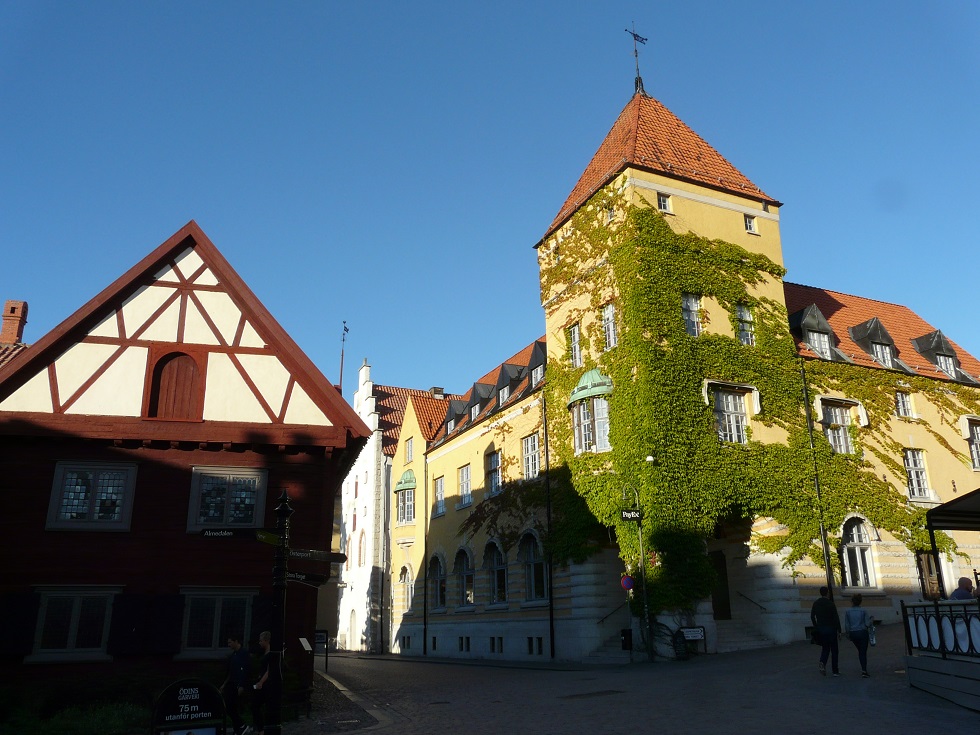
Visby is a cute medieval city
| First,
the capital. Viking town until the 13th century, Visby later became a
prominent member of the famous Hanseatic League and therefore a very
rich city in the 14th to the 16th century. After that, Hanseatic trade
decreases and there is not much going on in Gotland for another 500
years. Most historical sites are from the Middle Ages. |
| The city,
encircled by medieval wall of local stones, is a well-preserved witness
of the time with its winding cobbled streets and its magnificent
flower-filled houses. Weirdly enough, 16 of its 17 churches were simply
abandoned during the Reform (from Catholicism to Protestantism in the
16th century). The ruins are still there, strange ghost islands in the
middle of the bustling city... |

Typical street from the old Visby, note the hollyhocks that indicate we made good progress towards South!
|
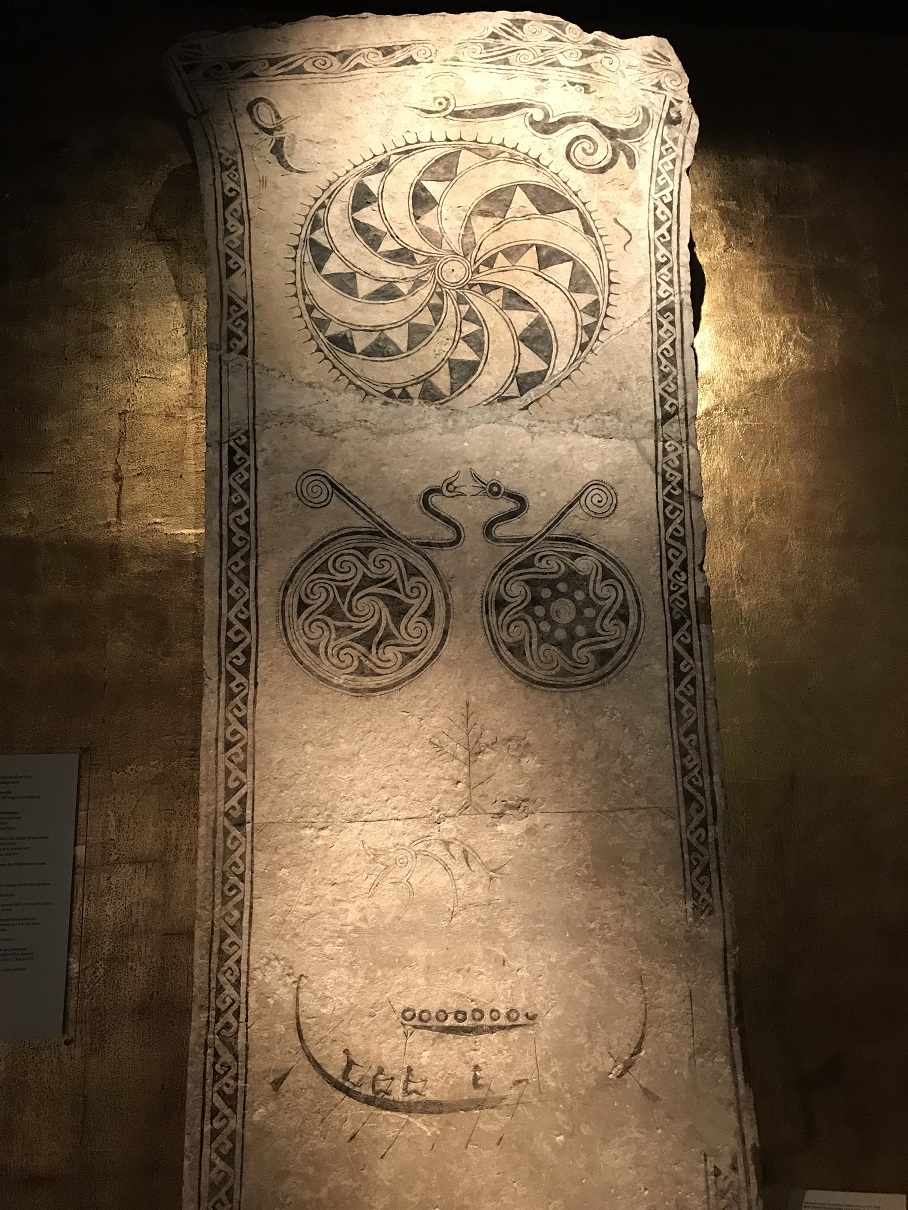
One of the magnificent standing stones explosed in Gotland's museum
|
As the
weather sours, we take refuge in the interesting Gotland Museum. We
discover erect stones that have been found all around the island. Very
different from our French “menhirs”: they are perfectly flat and
carved: here a Viking motif, there a longship, an animal, and often a
runic inscription all around. Most of these stones appear to be
mausoleums or tombstones.
Many Viking tombs have also been found
on the island, with valuables brought back from their looting
expeditions around the world. Artifacts from Iran, Pakistan or
Uzbekistan (Samarkand) made their way here, such a long time ago.
|
| Now we saw
the city, it's time to go a little further. A bus leaves us on the
small island of Fårö, at the northeastern tip of Gotland. There we rent
a bike for the day and cycle around on the roads (or beach side paths,
or forest tracks...) |

We swapped transportation means !
|

Sculptures of fossilized coral, quite unique landscapes...
|
The
northwest coast of Fårö is known for its very particular rocks.
Millions of years ago, Gotland was located at the equator and was home
to tropical flora and fauna, especially many corals. The continental
drift happened, Gotland ended up in the Baltic Sea, corals and other
exotic animals died and sedimented. The Gotland coast is today made of
limestone and countless fossils. The limestone has eroded over time,
the fossils remained, including an out-of-place looking coral reef
which gives Fårö its distinctive coastline. |
| Add
to that some adorable fishing villages, beautiful beaches sprinkled
with rocks that remind us of Estonia, and film crews of a
Franco-Swedish-German film (premiering on Arte for sure) - and you will
have an overview of our wandering. | 
Fisherman cabin by the sea
|
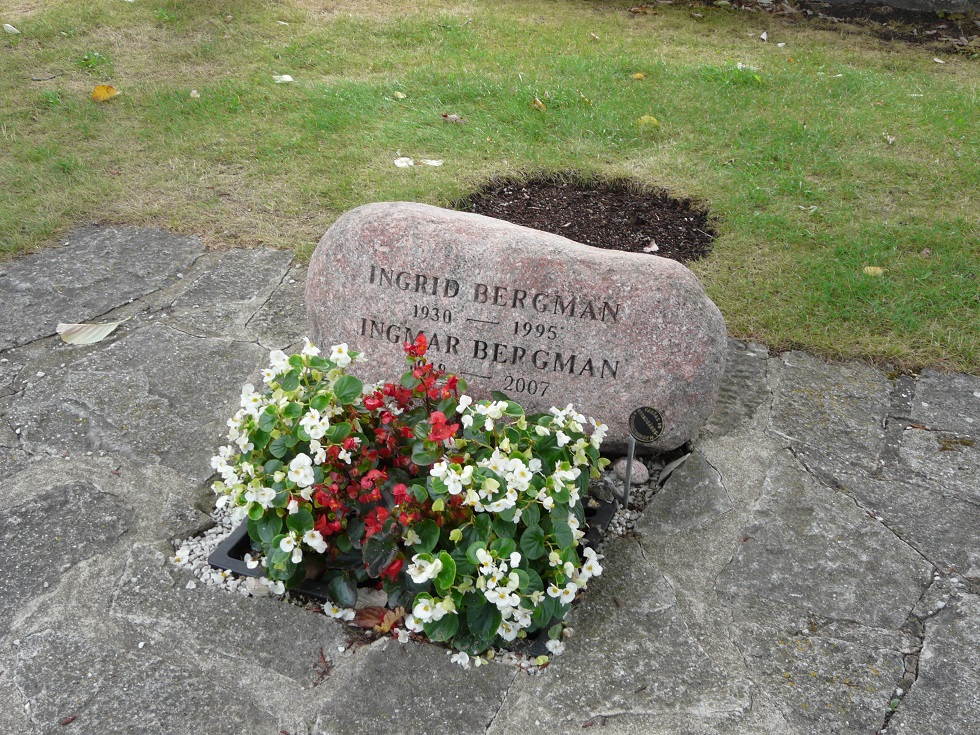
Scandinavians are known to get back to their home village to finish their lives...
| Last
stop in the small Fårö church. Typical of the local style of the 16th
century. It is surrounded by a cemetery overlooking the sea. One of the
50 graves here, Ingrid and Ingmar Bergman! Hard to imagine a place
further away from Hollywood ... |
In the
evening a bus drops us at Slite on Gotland itself, the 2nd biggest city
of the island - only because of its cement plant. We sleep in a
campsite even more empty than the marina. We are lucky to find a
pizzeria kebab open after 19h in this off-season ghost town.
The
only reason to come to Slite is its bike rental shop. They offer a
typical 3-speed model, but this time with a Harley-Davidson look,
seating low on the road… yeah! |
| All
day long we bike the country roads of North-East Gotland, crossing only
tiny hamlets. Rarely have we seen such a contrast between the capital
city and the rest of the islands. Visby is colorful, beautiful, lively…
the villages are tiny, almost austere and surrounded by barren mineral
landscapes almost with a post-apocalyptic look. | 
Hamlets of Gotland, a few wooden cabins on a rocky land...
|
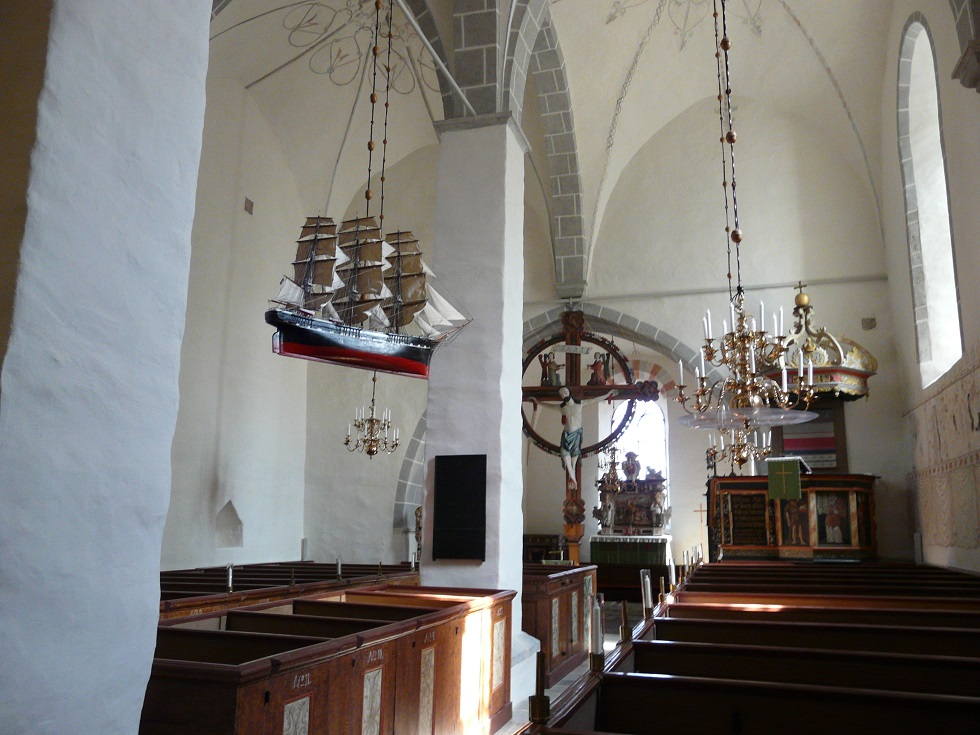
Typical of the medieval churches of Gotland: white walls with subtle paintings here and there, carved wood, ex-voto
| Every
village however has a magnificent 15th-16th century church to be proud
of. White with a wooden belfry, a white interior also with beautiful
frescoes and medieval wood carvings, often tombstones in Runic
inscriptions dating from the Viking era. European firebugs swarm on the
walls by the hundreds: those little red and black insects seem to feed
on the tar that covers the wood.
On this coast also some typical rock formations but curiously a little further from the seaside. |
| Another
typical sight in Gotland is its limestone lakes. Some are natural,
others are man-made, following the extraction of the stone used for the
production of lime. Their waters are turquoise blue because of the
white chalk bottoms. We can also swim there: today’s swimming spot is a
laaaaarge hole made by diggers, surrounded by wind turbines and turned
into a beach! Other-worldly… | 
A tropical lagoon ? Nope, a limestone lake in Gotland !
|
Gotland
is nice but it's big! We will have biked more than 130 km to finally
see only a small fraction of the island. But the weather forecast is
showing a few hours of wind from Northwest, and this is rare enough an
opportunity not to be missed!
|
| 18th August : Visby – Byxelkrok (53 NM) |
Leaving
at 2am, just after the cold air front, to catch most of the few hours
of wind from the northwest. Little wind is expected and we are not very
optimistic about our chances at sailing. But to our surprise, it blows
a good 4b and we sail full speed abeam at 5.5 - 6 knots! Perfect !
|
| As
we approach Öland, the wind veers and we must tack to cross the
northern tip of the island. Then the wind veers to the South and we
continue upwind to the harbor of Byxelkrok. Mooring is on stern buoys,
or alongside. We are offseason and the only visitors are long-distance
travelers, mainly German, on their migration back to more friendly
latitudes. The fee is also “off-season”: 140 SEK, including shower and
wifi. | 
The ice-cream shop of Byxelkrok is not closed for winter yet !
|
| The
harbor is NOT sheltered from southwesterlies, and quite a lot of wind
is expected tonight from that direction. We hope that the proximity of
the Swedish mainland will help a bit… but no: the wind is actually
funneled between the island and coast. The short swell is coming in as
well and shaking all boats inside the harbour. All our lines are in
double, the wind howls in the shrouds and the boat bobs around as if we
were at sea. The strong winds also last longer, due to the same
funneling effect... So we are stuck here and tossed about for 36 hours. |
19th August : visiting Byxelkrok |
| Byxelkrok
is a charming small fishing village, as nice to visit as its harbor is
ill-sheltered. It is very touristy in season but now much calmer. Some
red wood houses, a few restaurants, ice-cream parlors of course – and
hundreds of bikes to rent. Countless motorhomes drive around the
island: it is easier to reach through a bridge to the mainland 60km
South of here. | 
Byxelkrok, main avenue
|
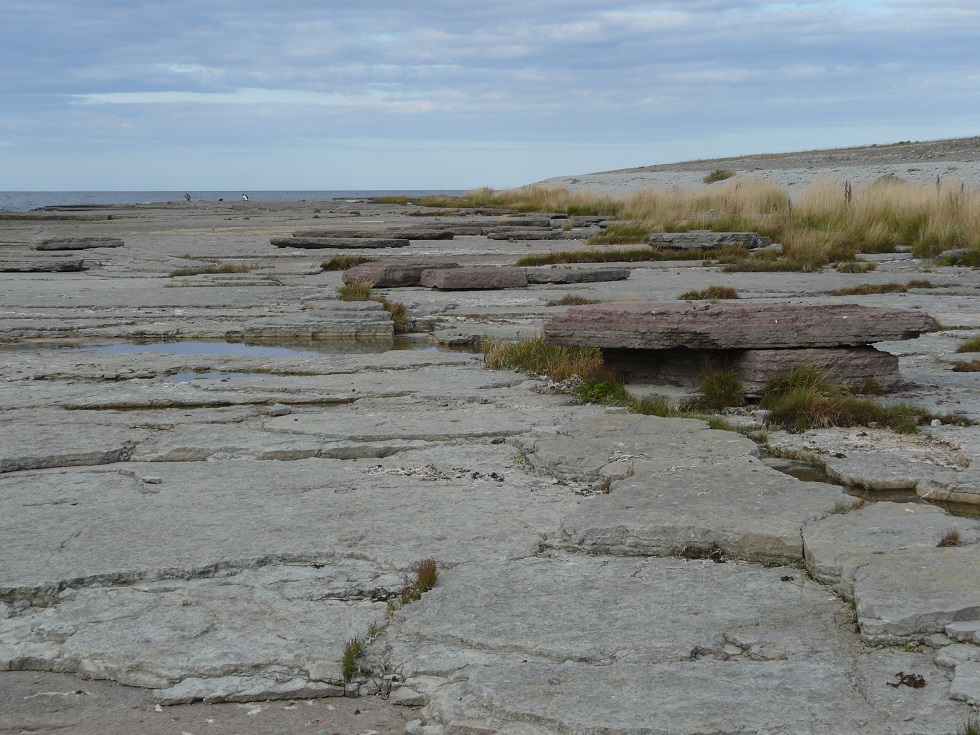
Stone slabs, nicknamed here the "Neptune's fields"
| The
coast is very distinctive, with some aspects reminding us of Gotland.
There are very flat rock formations, covered with fossils of
brachiopods and trilobites, like a giant slab falling into the sea. |
| Beautiful
pebbles and even sandy beaches on the East coast. The interior is flat,
covered with cultivated fields or forests (pine trees of course, but
also oaks and beeches!). As in Gotland, there are many fishing huts and
limestone lakes. Finally, many windmills testify that the wind blows
regularly here (we confirm ...). They were nearly 2000 years in 1850,
that is one very 68m in average (over 137km long, very narrow island).
Only 300 survived including some newer and more efficient models,
imported from Holland. | 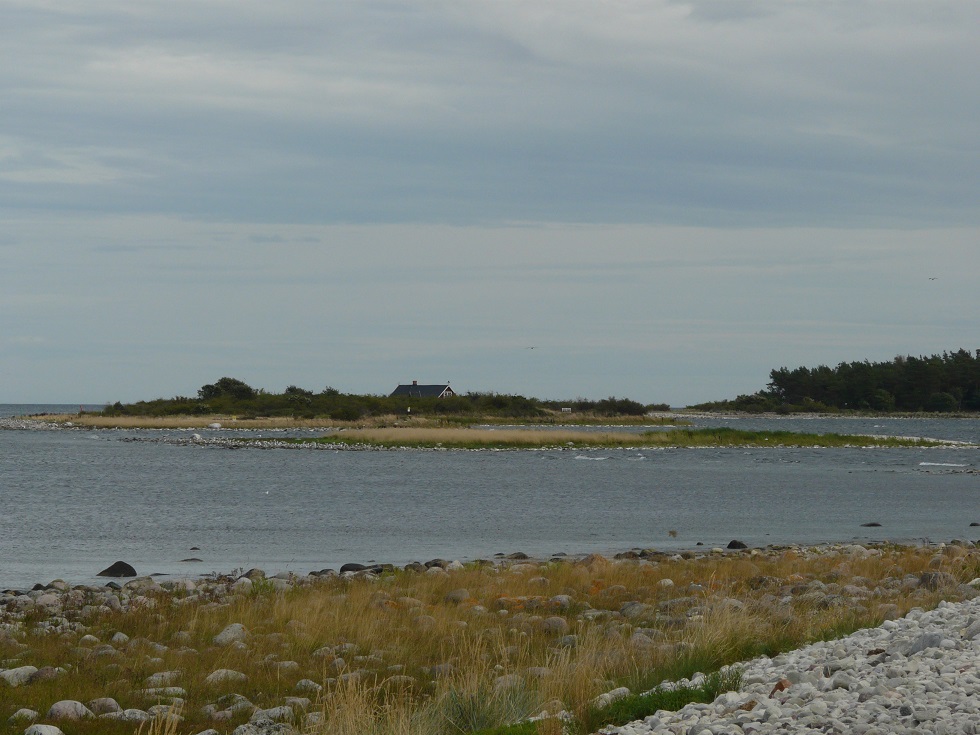
Biking to the very end of the northern tip of Öland
|
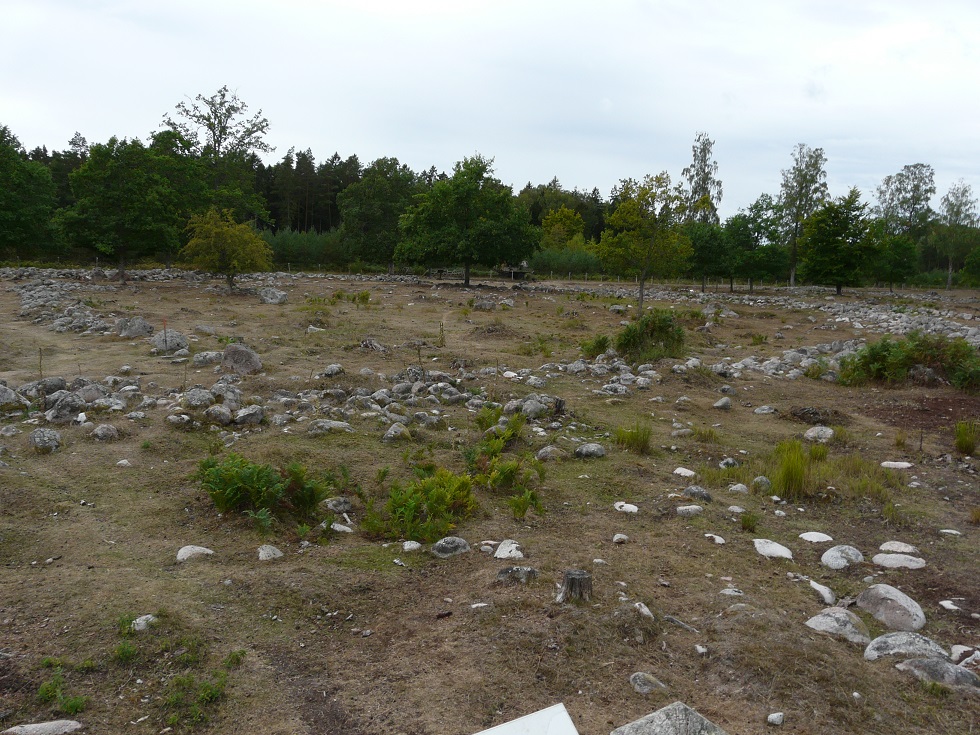
Must be some house foundations and walls around fields (these we can identify as there is no stone over the area !)
|
There
are ruins also, this time from the Iron Age (600 BC to 300 BC). A short
distance from the harbor is the prehistoric village of Rosendal, which
they claim to the largest / best preserved site of this period in
Europe. Only the stone foundations remain with sheep grazing
in-between, it takes a little imagination to rebuild the village… |
| As
if wind was not enough, it begins to rain heavily ... But there is hope
for a change of wind to the Northwest soon, and we will continue our
journey south. |
| |
|
|
|
|
|
| |
| |
| |
| TOP
|
| |
| |
| |
| |
|










